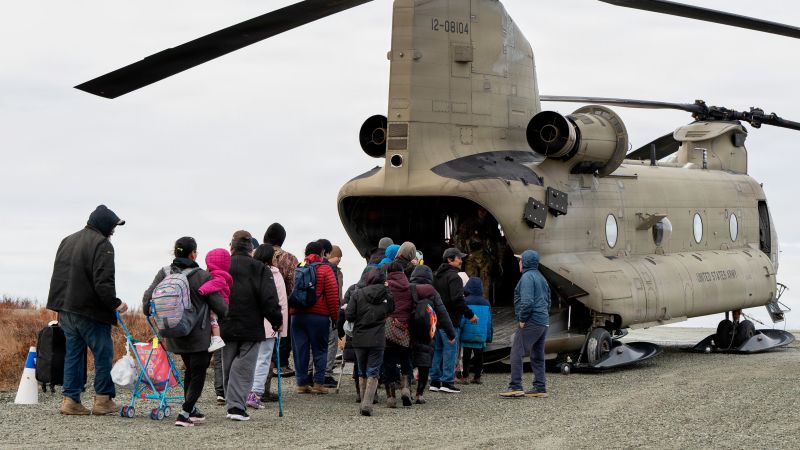When the governor of Alaska stated that many evacuees from the recent devastating storm won’t be able to return home for at least 18 months, it wasn’t just a grim update; it was a stark reminder of the unique challenges facing the Last Frontier. This isn’t merely about rebuilding homes; it’s about reconstructing lives, communities, and a sense of place in an environment where every challenge is magnified.
The Unseen Scars of Coastal Fury
The pictures told a story of overwhelming physical destruction: homes torn from foundations, infrastructure shattered, entire coastlines reshaped. Yet, the governor’s pronouncement points to a deeper, more insidious damage that extends far beyond visible rubble. For remote Alaskan villages, often accessible only by air or sea, vital supply lines, communication networks, and the very ground beneath their feet have been compromised. The sheer scale of the logistical nightmare to assess, clear, and begin reconstruction in such isolated areas is staggering. It’s a testament to the storm’s power that it didn’t just break structures, but fractured the intricate web that sustains life in these unique communities.
The immediate aftermath has seen an exodus of residents, not just to temporary shelters, but to distant towns and cities, severing vital social connections. Imagine the profound disorientation of being uprooted, knowing that even if the physical structure of your home could be salvaged, the supporting ecosystem – the fish processing plants, the community hall, the local store – might be gone for good. The mental and emotional toll on those who have lost everything, including their immediate future, is immense.
Eighteen Months: A Lifetime in Limbo
An 18-month displacement isn’t a temporary inconvenience; it’s a profound disruption that redefines existence. For children, it means missing critical developmental stages in familiar surroundings, attending new schools, and adapting to unfamiliar cultures, potentially hundreds of miles from their heritage. For adults, it’s a battle against economic uncertainty, the struggle to find new work, and the heartbreak of being separated from ancestral lands and traditional livelihoods. Many Alaskan villages are vibrant cultural hubs, deeply rooted in subsistence practices and communal living. To be removed from this environment for such an extended period threatens not just individual well-being, but the very fabric of indigenous identity and continuity.
The governor’s timeframe hints at the complexity of recovery in a state where construction seasons are short, resources are spread thin, and the logistics are mind-boggling. It underscores the need for not just immediate relief, but a sustained, thoughtful approach to rebuilding that respects the unique character of each affected community. As one local community leader put it, “It’s not just about putting up new walls; it’s about ensuring our people have a place where their spirit can thrive again. Eighteen months is a long time to keep a culture waiting.” The challenge now is to transform this period of limbo into a journey of resilient reconstruction, ensuring that when they do return, it’s to a community that is not just physically restored, but socially and culturally rejuvenated.
The scale of the Alaskan storm’s devastation, and the projected timeline for recovery, serves as a powerful reminder of nature’s formidable power and the extraordinary resilience required to confront it. The journey ahead for these communities will be long, fraught with challenges, but hopefully, also marked by immense human spirit and collective support.




